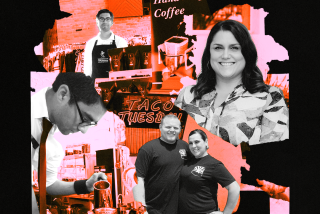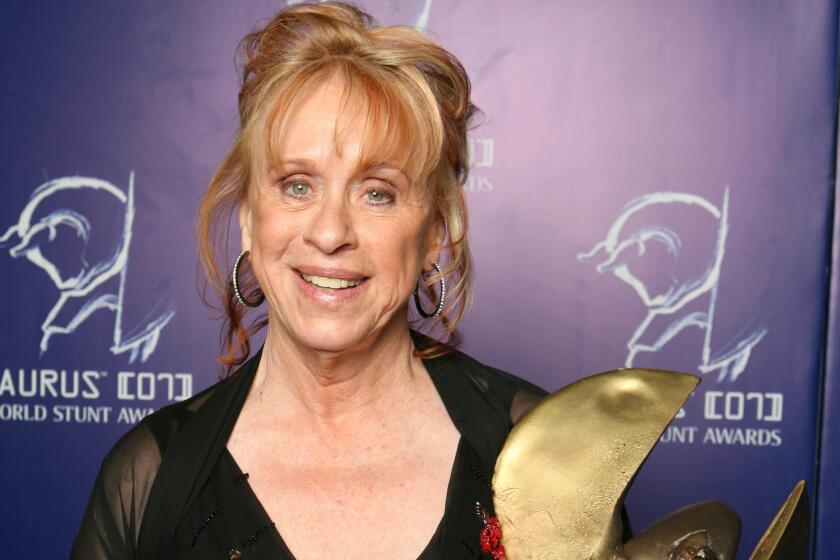After layoffs, BuzzFeed CEO focuses on growing revenue, diversifying

“Utopia” is the name of the room that BuzzFeed Chief Executive Jonah Peretti uses as his L.A. office, but the last few months have been anything but that. His New York-based start-up, once seen as a potential savior for journalism, cut roughly 220 staffers this year, the latest sign of turmoil in the digital media sector.
BuzzFeed, which generated more than $300 million in sales last year, is unprofitable. But Peretti, a founding shareholder, plans to take the company to profitability later this year as it continues to balance hard news and lighthearted memes, mixed in with advertising and marketing.
There are challenges ahead for the company, which has raised $497 million from investors including NBCUniversal.
Facebook and Google, which run platforms where BuzzFeed and other digital media companies distribute their content, could potentially face government regulation, which could affect the algorithms and content on their platforms. BuzzFeed’s news division is also seeking unionization.
Peretti, 45, spoke on Thursday from BuzzFeed’s L.A. office. This interview was edited for length.
Why were the layoffs necessary?
It’s something that on a personal level is the worst thing you have to do as a CEO, but it was a necessary thing to do in order to get the company’s cost structure to be in line with the marketplace. In broad strokes, we’re seeing a lot of improvement in the revenue that is coming from the big platforms, but not enough to have been able to continue forward without making some cost reductions.
How do you plan to bring the company to profitability?
The big thing is focusing on the things we’re uniquely good at doing. The stuff that has really grown for us has been big partnerships. Probably the most well known example is (BuzzFeed’s food network) Tasty which was generating no revenue on Facebook, even though it was the biggest media page on Facebook. We had to figure out our own ways to generate revenue and the partnership with Walmart was a good example of saying, ‘OK, let’s have a 100 sku [stock keeping unit] line of kitchen products that are for sale at every Walmart. Let’s put those products into every Tasty video so that when people are watching the Tasty video they can see the products.’ We have figured out ways to do things that Google [and] Facebook can’t do — things that are more creative [and] more strategic that cut across different businesses and are really solving business challenges.
The platforms are hungry for content. If you can create really good content at high scale, the economics are now to the point where that kind of activity can be profitable for a company like BuzzFeed. We’re helping Amazon sell a lot of products through our shopping posts. We’re making videos that people love that have pre-roll or mid-roll [ads] on them. We’re making articles or stories that have programmatic [ads] on them. Because of our scale, operating efficiency, our brand and other factors, and because the economics have improved on the big platforms, all of that taken together makes that an interesting, profitable business.
Your business still relies on these partners, like Facebook and Google. Do you feel like they’re paying you enough for the content that you provide them?
I think it has improved a lot. [For example] our fill rates on YouTube have gone up. YouTube has had some high-profile examples of people who were in Google Preferred who did some offensive content so they are pulled out. [That] means that more of the premium content that we’re making, there is less supply of that, which has helped our fill rates go up.
If you think about the glory days of cable, where the cable companies had consolidated to a point where the cable operators really needed their content, there was at least more balance [in negotiations]. The thing that is tricky about the current environment with the big tech platforms is … you can count on one hand the companies that are having a huge impact on the media industry. Within digital media there is tremendous fragmentation across a lot of different companies. So you have a negotiation that is basically between a $500 billion market cap company and then some digital media companies that are worth less than 1% of that. It’s hard for content to get paid fairly because of that.
The irony of it though, is it ends up hurting the big platforms. The business model for fake news works, but the business model for news is a lot more challenging and unless the marketplace is managed more aggressively, they are not going to get the mix of content that supports all the things that will help them in the long run build a strong audience. They are starting to understand this and we’re headed toward a better place and we’re seeing the CPMs [cost per thousand impressions] and fill rates going up. They have started to wake up to the fact they don’t want to cut off the oxygen supply of the companies that are making things that actually people go to the platform for.
In the past you mentioned one solution to this is M&A, these digital media companies joining together to better negotiate. Is that still a possibility for your company?
I think it’s possible to achieve some of the same benefits without M&A. Certainly if it was the right thing, buying another company that could add to what we’re doing would make sense.
Some have compared BuzzFeed to Yahoo. Yahoo at its peak was involved in a lot of different things. Is BuzzFeed spread too thin?
We’re focused on being a good digital media company and having diversified revenue is part of that. The diversification is really a strength. You want to find ways that the things you’re doing support each other and reinforce each other. Our commerce business and our advertising business are very complementary. People come to BuzzFeed and they are looking for stories to read. Especially around holidays, they are looking for things to buy. Those things support each other. When our audience gets bigger, the commerce business does better, the advertising business does better.
Having disconnected things that don’t help you is something we try to get out of. For example, we had this homesick candles business [which sold candles that smelled like peoples’ home states]. Owning that business, even though it was a good business, didn’t make sense for us. You had to manufacture and warehouse candles and ship candles. So we sold that business and have moved to more licensing models that actually make more sense.
Where do you see BuzzFeed News fitting into your overall business?
News has a lot of special qualities to it. You can’t really treat news like any other content business. The stakes are higher, the impact you can have on the world is higher. For the business side, it has also been something that’s been really strong in extending into studio development and making new kinds of shows. We have “AM to DM” on Twitter, a new one coming to Snap. We have a great Oxygen show based on a true crime story that a reporter covered and we produced the show. … News is something that drives a lot of repeat visiting, which is important. It’s a time when people are intensely focused on the news for a lot of reasons.
Where do you see BuzzFeed News’ role in pushing the boundaries?
What’s amazing right now, everything is so polarized … [and] even things that happened that were uncontroversial in the past for a news organization to publish all of a sudden become battlegrounds. It’s hard to imagine publishing any scoop or news story or disclosing documents to the public and not have it be something that someone is going to get upset about. We have this crazy war between the president and the press, and between the different parts of the media industry and different camps on Twitter.
In the past, you’ve mentioned how you don’t see unions as being a good fit at BuzzFeed. Now, you have members of BuzzFeed News trying to organize a union. Are your views on unions still the same?
Forming a union is a decision that employees make. It’s not a decision that CEOs make. I really value my employees. A lot of people who found companies have a real different relationship to how they think about employees. You tend to have a mindset of ‘we’re all in this together and our interests are aligned and we’re fighting for the same thing.’
That mindset is one of the reasons why to me it feels like there’s better ways for direct communication to more flexibly and directly deal with some of the things unions can address in companies.
If you had to go back, knowing what you know now about BuzzFeed’s business, what are things that you would change and do differently?
This is not a shock, but obviously our costs got too high in certain areas where the business logic didn’t end up sustaining it.
In some cases, I thought that the platforms would want to move content up-market to make higher quality content sooner than they did. And basically that they would reward higher quality content with more production and they really haven’t. They have really stayed true to the ‘I’m going to take a look at the data and see what users like and if that video costs $1 to make, that’s fine and if the video costs $100,000 to make, that’s fine.’ That was one area where we increased the production value of certain things we were doing thinking that would be the place where YouTube or Facebook was headed, and that was not really true.







